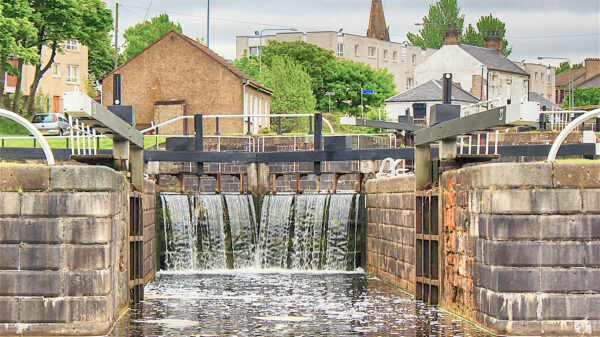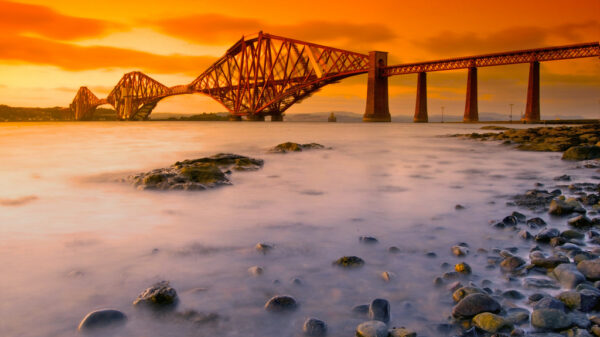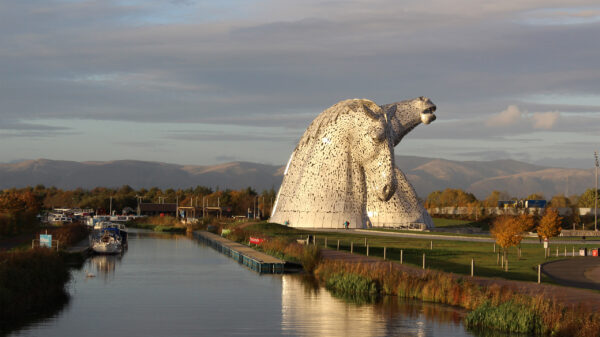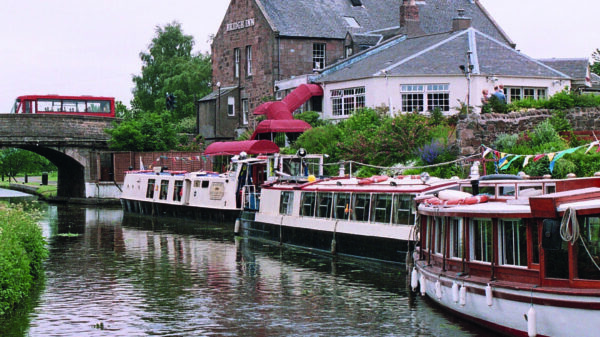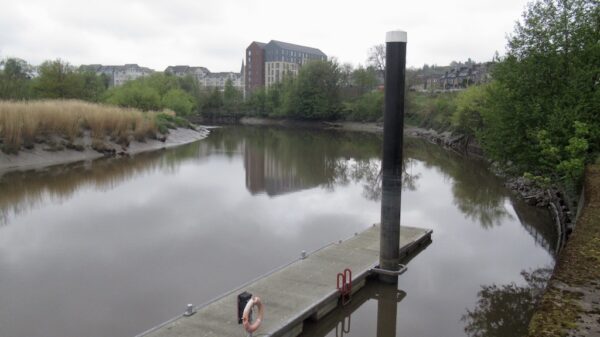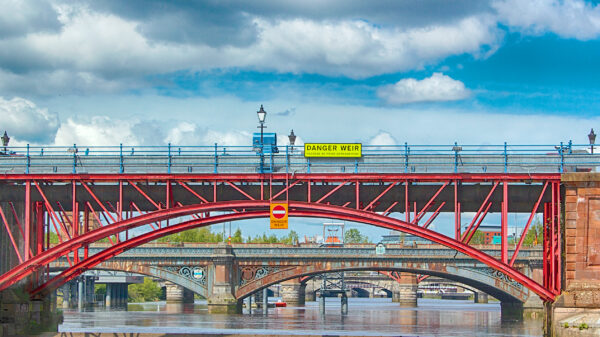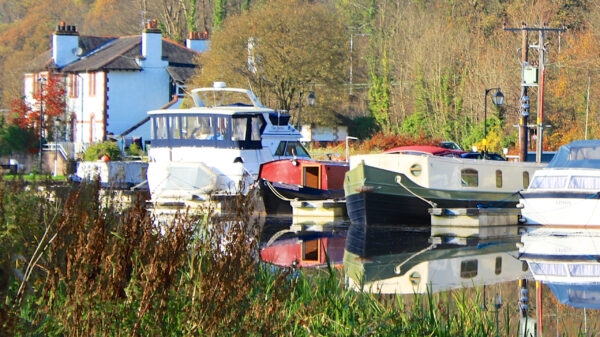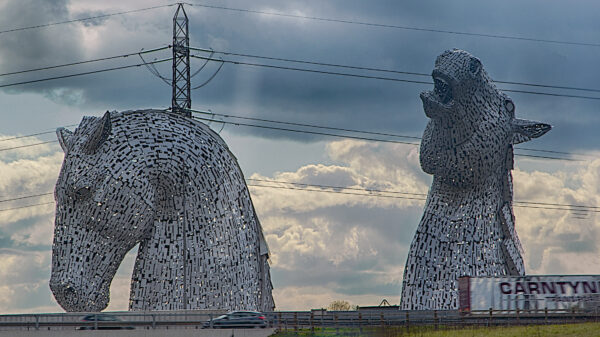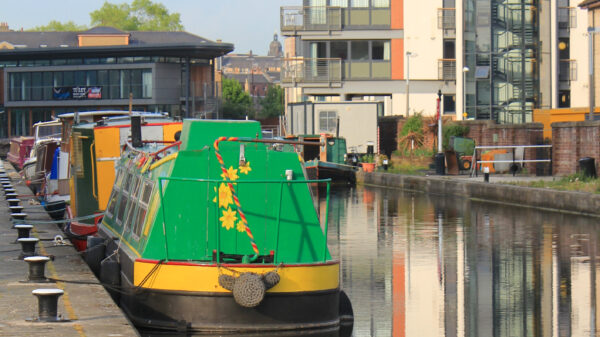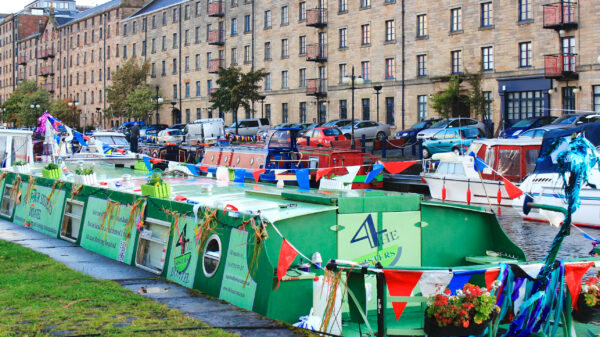About the Forth & Clyde Canal and the Kelpies
The Forth & Clyde Canal was opened in 1790 to link the Firth of Clyde and the Firth of Forth, and to provide a safe route for coasters during the war with France. Pleasure steamers used the canal from 1893 until the outbreak of World War II. The canal was closed in 1963 to facilitate road construction. With funding from a huge Millennium Lottery Fund grant, the Canal was reopened in 2001, all except for the easternmost length through Grangemouth, which was bypassed with a short link into the River Carron just west of the M9 motorway crossing. At Port Downie, a flight of eleven locks had linked the Canal to the Union Canal to Edinburgh but these were infilled in the 1930s. Replacing them is the Falkirk Wheel, the world’s first rotating boat lift, opened by Queen Elizabeth II in 2002.
Scotland’s newest canal section was built as part of the £43m Helix project. The Kelpies and the Forth and Clyde Extension – the Queen Elizabeth II Canal – linking the canal to the Firth of Forth were officially opened by the Queen on 5th July 2017. The Kelpies are a pair of 100ft high horses’ heads, representing the heavy horses which pulled boats and cargo along the towpaths of the Forth & Clyde and Union Canals in their heyday. Along with the famous Kelpies sculptures, a 0.65 mile (1 km) length of new canal with a new Sea Lock was built to bypass the Millennium Link’s new connection into the River Carron, which had required boaters to navigate under the M9 motorway, the A905 Kerse Bridge and a pipe bridge. Both connections to the River Carron are now available for use.
[The photo shows the famous Kelpies sculptures – by Jonathan Mosse]


